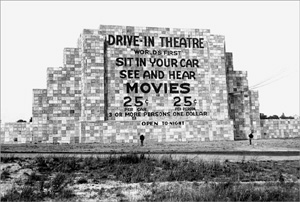 Richard H. Hollingshead, Jr. is credited with the invention of the Drive-in Movie Theatre. Hollingshead’s position as the sales manager for Whiz Auto Products Company was not very interesting and he set out to challenge himself. While studying American culture, Richard discovered that while Americans would never give up going to the movies it was often a hassle for parents. Going to the movies was not a family activity. Children went to matinees while adults dressed up and went to evening shows. A babysitter was needed for the children and dad had to dress up after a day of work. Continue reading “Popcorn Never Tasted So Good – The Invention of the Drive-in Movie Theatre”
Richard H. Hollingshead, Jr. is credited with the invention of the Drive-in Movie Theatre. Hollingshead’s position as the sales manager for Whiz Auto Products Company was not very interesting and he set out to challenge himself. While studying American culture, Richard discovered that while Americans would never give up going to the movies it was often a hassle for parents. Going to the movies was not a family activity. Children went to matinees while adults dressed up and went to evening shows. A babysitter was needed for the children and dad had to dress up after a day of work. Continue reading “Popcorn Never Tasted So Good – The Invention of the Drive-in Movie Theatre”

Category: Patent History
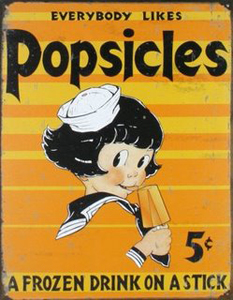 In 1905, an eleven-year old boy mixed some soda water powder and water. The boy, Frank Epperson, forgot the mixture on the back porch with the stirring stick still in the container. Overnight the temperature dropped below freezing turning the mixture to ice. Epperson took the frozen soda water to school to show his friends.
In 1905, an eleven-year old boy mixed some soda water powder and water. The boy, Frank Epperson, forgot the mixture on the back porch with the stirring stick still in the container. Overnight the temperature dropped below freezing turning the mixture to ice. Epperson took the frozen soda water to school to show his friends.
Eighteen years later, in 1923, Epperson remembered his frozen concoction. He started a business producing with what he called Epsicles in seven different fruit flavors. He designed a machine to produce the frozen confection. Epperson’s children referred to the frozen treats as Pop’s ‘sicle. Epperson eventually changed the name from Epsicles to Popsicles.
Continue reading “A Frozen Treat on a Stick – The Invention of Popsicles”
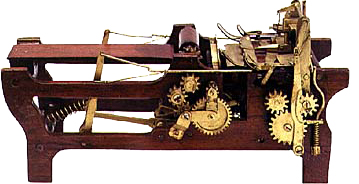 Margaret Knight is credited with over 90 different inventions and she received 26 patents in her lifetime. Her patents included textile and shoe-making machinery, domestic devices, and an automobile engine. She received her first patent at the age of 30 but was inventing her entire life.
Margaret Knight is credited with over 90 different inventions and she received 26 patents in her lifetime. Her patents included textile and shoe-making machinery, domestic devices, and an automobile engine. She received her first patent at the age of 30 but was inventing her entire life.
Ms. Knight’s first invention was at the age of 12, two years after her father passed away. Her brothers began working in a textile mill to support the family, by the time she was 12, she had joined them. When working, Ms. Knight witnessed an accident where a snagged thread caused a spindle to fly off of a machine and injure some of her fellow workers. This experience led to her inventing a stop-motion device that could stop machinery used in textile mills and prevent injury. Continue reading “Famous Women Inventors: Margaret Knight – Inventing Since the Age of 12”
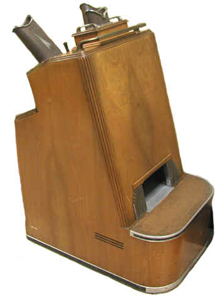 Shoe-fitting fluoroscopes were common items found in US, Canadian and British shoes stores from the 1920’s until about 1960. A shoe fitting fluoroscope allowed for a real time x-ray of a person’s foot inside a pair of shoes. A customer would stick his/her feet in the opening of the fluoroscope while standing and look through a viewfinder. The bones of the feet and the outline of the shoes were visible with the x-ray. Real time viewing allowed the customer to wiggle his/her toes and see how much room was inside the new shoes.
Shoe-fitting fluoroscopes were common items found in US, Canadian and British shoes stores from the 1920’s until about 1960. A shoe fitting fluoroscope allowed for a real time x-ray of a person’s foot inside a pair of shoes. A customer would stick his/her feet in the opening of the fluoroscope while standing and look through a viewfinder. The bones of the feet and the outline of the shoes were visible with the x-ray. Real time viewing allowed the customer to wiggle his/her toes and see how much room was inside the new shoes.
In the 1920’s, many inventors were looking for a way to utilize the new technology of the fluoroscope. A fluoroscope was made up of an X-ray-generating tube and a fluorescent screen. A person would stand between the two and the part of the body being x-rayed would appear on the screen. Continue reading “Find the Perfect Shoe Size With the Patented Fluoroscope”
 Carl Magee was a member of the Oklahoma City Chamber of Commerce Traffic Committee and was assigned the task of solving the parking problems in Oklahoma City. People that worked in the down area were parking on the streets all day which left very few spaces for shoppers and other visitors to the business district.
Carl Magee was a member of the Oklahoma City Chamber of Commerce Traffic Committee and was assigned the task of solving the parking problems in Oklahoma City. People that worked in the down area were parking on the streets all day which left very few spaces for shoppers and other visitors to the business district.
The solution would be to install parking meters that would charge for the use of parking spaces and force turn over of the spaces that would otherwise be filled all day by one car. The parking meters would also generate revenue for the city.
Magee built a crude model and then enlisted the help of the Oklahoma State University Engineering Department. A contest to built a working model ran from February 7 to May 6, 1933. Several students entered but there were no acceptable working submissions. Continue reading “Scrounge for Quarters – The Parking Meter Patent”
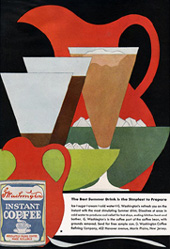 Everyone has at one point or another, drank a cup of instant coffee whether we wanted to or not. In 1901 – by many accounts on July 24 – Japanese American chemist Satori Kato invented instant coffee while living in Chicago. Kato had already invented soluble tea. He was later approached by a U.S. coffee importer and roaster about applying his method for dehydrating tea to coffee. With the help of an American chemist, Kato was successful. The same year, the Kato Coffee Company distributed free samples of its product at the Pam-American Exposition in Buffalo. The company had very little success with its new product. Very few liked the taste of the coffee and it was considered a novelty. Kato received U.S. Patent No. 735,777 on August. 11, 1903 for a Coffee Concentrate and Process of Making Same. Continue reading “Quick Cup of Joe? Invention of Instant Coffee”
Everyone has at one point or another, drank a cup of instant coffee whether we wanted to or not. In 1901 – by many accounts on July 24 – Japanese American chemist Satori Kato invented instant coffee while living in Chicago. Kato had already invented soluble tea. He was later approached by a U.S. coffee importer and roaster about applying his method for dehydrating tea to coffee. With the help of an American chemist, Kato was successful. The same year, the Kato Coffee Company distributed free samples of its product at the Pam-American Exposition in Buffalo. The company had very little success with its new product. Very few liked the taste of the coffee and it was considered a novelty. Kato received U.S. Patent No. 735,777 on August. 11, 1903 for a Coffee Concentrate and Process of Making Same. Continue reading “Quick Cup of Joe? Invention of Instant Coffee”
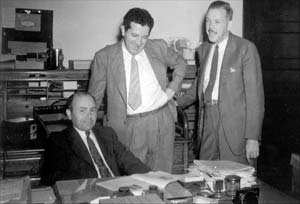 Marshmallow Peeps are a stable of Easter Baskets all over the country. This delicious or maybe disgusting candy is made from marshmallows, sugar, gelatin and caranauba wax. These sugary treats were brought to consumers on a large scale in 1954. But their story starts before that.
Marshmallow Peeps are a stable of Easter Baskets all over the country. This delicious or maybe disgusting candy is made from marshmallows, sugar, gelatin and caranauba wax. These sugary treats were brought to consumers on a large scale in 1954. But their story starts before that.
Russisan native Sam Born moved from France, where he learned to make chocolates, to the United States in 1910. In 1917, Born opened a small store in New York City selling chocolate and other confections. There he invented a machine for automatically placing sticks in lollipops. Continue reading “Easter Bunny Favors Marshmallow Chicks – The Invention of Peeps”
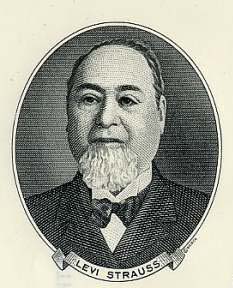 In 1853 at the height of the California Gold Rush, everyday items were in high demand and short supply in San Francisco. A 24-year-old German immigrant, Levi Strauss, left New York and made the journey to California to join his older sister and brother-in-law in running their dry goods store. Upon his arrival, a prospector asked Strauss what he had brought. When told that Strauss had brought canvas for tents and wagons, the prospector told him that he should have brought pants.
In 1853 at the height of the California Gold Rush, everyday items were in high demand and short supply in San Francisco. A 24-year-old German immigrant, Levi Strauss, left New York and made the journey to California to join his older sister and brother-in-law in running their dry goods store. Upon his arrival, a prospector asked Strauss what he had brought. When told that Strauss had brought canvas for tents and wagons, the prospector told him that he should have brought pants.
Levi Strauss had the canvas made into pants. Miners liked the sturdy pants but complained that they tended to chafe and the canvas material never became soft and comfortable. Once the supply of canvas was gone, Strauss began using a thick fabric made in the French town of Nimes known as serge de Nimes. This name would eventually be shortened to denim. Continue reading “Making History: Levi Strauss Patents His Iconic Jeans”
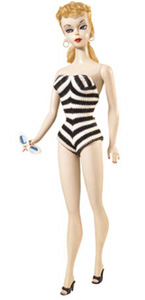 In the mid 1940’s, the young ambitious duo Ruth and Elliot Handler, owned a company that made wooden picture frames. Handler and his partner Harold Mattson built the picture frame samples and it was Ruth’s job to market them. Elliot then decided to use the spare wood to make doll furniture. This began a toy business named Mattel – MATT for Mattson, and EL for Elliot.
In the mid 1940’s, the young ambitious duo Ruth and Elliot Handler, owned a company that made wooden picture frames. Handler and his partner Harold Mattson built the picture frame samples and it was Ruth’s job to market them. Elliot then decided to use the spare wood to make doll furniture. This began a toy business named Mattel – MATT for Mattson, and EL for Elliot.
Ruth noticed that her daughter, Barbara, and her friends enjoyed playing with dolls that looked like grown ups rather than with baby dolls. Most of these dolls were made of paper and were not three-dimensional. Elliot Handler took the idea of such a doll to his all male ad executive team at Mattel. The committee rejected it because they saw little mass appeal for such a doll.
Soon after, on a trip to Europe, Ruth found the German doll Lilli. She was made of hard plastic with molded on shoes, earrings and blonde hair in a ponytail. The doll was offered in a seven or an eleven-inch size. Lilli inspired Ruth to design the Barbie doll. Continue reading “Making History: World’s Most Successful Doll – Barbie”
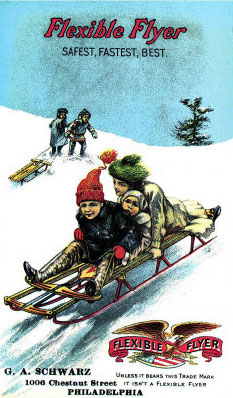 The Flexible Flyer was invented over 100 years ago by a farm equipment manufacturer. Looking to provide year round employment for his workers, Samuel Leeds Allen began trying to invent a sled in the 1880’s. Coasting, as sledding was then known, was very popular and Allen was hoping to capitalize on this.
The Flexible Flyer was invented over 100 years ago by a farm equipment manufacturer. Looking to provide year round employment for his workers, Samuel Leeds Allen began trying to invent a sled in the 1880’s. Coasting, as sledding was then known, was very popular and Allen was hoping to capitalize on this.
Allen’s first attempts at developing a sled were tested by the children at Westtown School in Pennsylvania. The predecessor of the Flexible Flyer was the Fairy Coaster which was a double-runner or bobsled which held three or four adults. Runners were made of steel and seats of a plush fabric. This entire sled could be folded into a small package for easy transportation on a streetcar or train. The problem with this first sled was a retail price of $50.00. This expensive price tag made it impossible to sell in quantity. A smaller cheaper version of this sled was designed but testing proved it to be too small and not have enough runner for proper steering. Eventually the entire production line for the Fairy Coaster was sold at auction. Continue reading “Making History: Invention of the Flexible Flyer”
